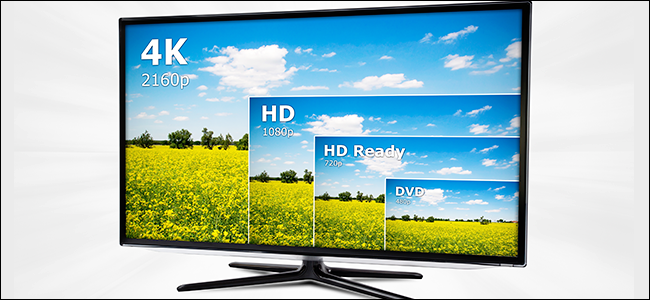Lets say incoming transmission is 1080i or 1080p, what kind of upscaling is the TV going to perform? Boost it up to 4K? What is exactly is Upscaling under what conditions?
What Does 4K Upscale Mean?
- Thread starter teetertotter
- Start date
- Latest activity Latest activity:
- Replies 12
- Views 3K
You are using an out of date browser. It may not display this or other websites correctly.
You should upgrade or use an alternative browser.
You should upgrade or use an alternative browser.
This should help.Lets say incoming transmission is 1080i or 1080p, what kind of upscaling is the TV going to perform? Boost it up to 4K? What is exactly is Upscaling under what conditions?

What Is "Upscaling" on a TV, and How Does It Work?
Should you buy a 4K TV for its upscaling capabilities? Not really. All TVs upscale images, it isn't a special feature. But how does upscaling work? And why is it on every TV?
You are welcome. Make sure that you read up about burn in problems with OLEDs.Voyager6 Ya, thank you for your SIMPLIFICATION! Getting ready to replace my 2+ year old 4K UHD HDR with an OLED next month.

What causes OLED burn-in, and how can I fix it?
What you need to know about your extra fancy TV
I will make sure and do the reading. Going back, Plasma was an issue and careful in the offset. Thanks
If you have access to OTA signals and can wait, you might want to investigate a TV that includes a Nextgen TV tuner. There are supposed to be several models available by Thanksgiving. I'm not sure I've heard of any of the OLED models featuring the ATSC 3.0 technology but I'd hope that would be part of the feature set. Announcements from the Consumer Electronics show indicated that Samsung and Sony will be offering QLED sets with Nextgen TV tuners.Getting ready to replace my 2+ year old 4K UHD HDR with an OLED next month.
Keep in mind, some model TV's are better at upscaling than others. I learned that last year when I first ventured into 4K UHD sets. It was a TCL and the upscaling looked horrendous. Ended up returning it and getting a native 1080p set. 4K resolution is 3840x2860. AFAIK there still isn't a ton of content available at that resolution. It's the HDR that a lot of people want.
I have a 2017 TCL, 4K UHD HDR, with Direct TV, tied into my Denon AVR, UHD, and picture quality is great! Even when viewing 4K, HDR, streaming content. Having an OLED, picture should be a bit better, from reading others experiences. This has been my experience.
Also, having ROKU built in, is a perfect combination for me too.
Also, having ROKU built in, is a perfect combination for me too.
An OLED compared to a TCL anything is going to be drastically better.
An OLED compared to a TCL anything is going to be drastically better.
Especially off angles and/or with lights off or dimmed.
As tigerfan33 was getting close to saying, OLED has issues in rooms where other light sources are difficult to control. If you follow the technology, you'll also find that pixel brightness uniformity can be somewhat disappointing. Burn-in is much less of an issue now but for those who demand retina-searing contrast levels, it can still be very real.An OLED compared to a TCL anything is going to be drastically better.
Viewing angle looks to be one of the prime drivers for wide adoption of OLED going forward as the LED technologies are going the wrong way there. If your "theater" is somehow wider than it is deep, this can be a show-stopper. Of course having a "theater" is more important to OLED due to where the brightness range lies.
The choice is absolutely not a no-brainer as there's arguably been more brightness and color accuracy progress on the LED side (quantum dots and nano cells). There's also the fact that you can buy two great LED TVs for the price of one quality OLED.
One thing I can tell you is my 2017, TCL, 55P605, 4K, UHD HDR has [VA] panel producing a poor side viewing angle. Whereas the older Vizio HD Smart TV, has an [IPS] panel with a wide side viewing angle. The 2015 Vizio, may have even a slightly better picture. That is, looking at DTV HD TV program picture only, which we use only, even when Netflix streaming.
The older Vizio Smart HD is in the living room where as, the TCL, 4K is viewed straight on in the media room.
But, I will be looking at an OLED if great improvement in picture quality, which everyone says there is. Yes, there are OLED's and OLED's and maybe another near term?
The older Vizio Smart HD is in the living room where as, the TCL, 4K is viewed straight on in the media room.
But, I will be looking at an OLED if great improvement in picture quality, which everyone says there is. Yes, there are OLED's and OLED's and maybe another near term?
Similar threads
- Replies
- 0
- Views
- 1K
- Replies
- 23
- Views
- 4K
- Replies
- 4
- Views
- 3K
- Replies
- 5
- Views
- 5K

